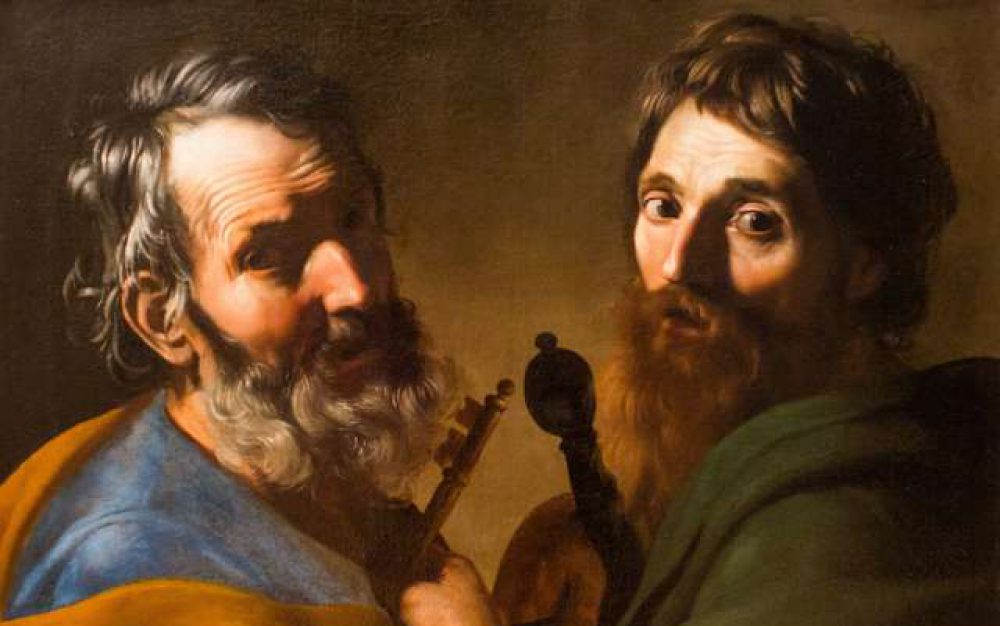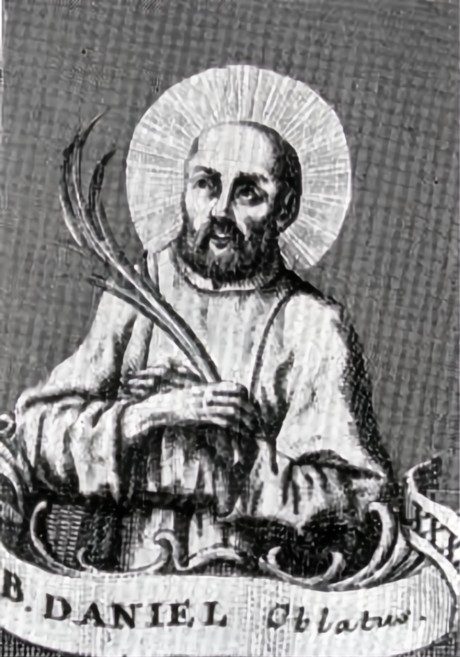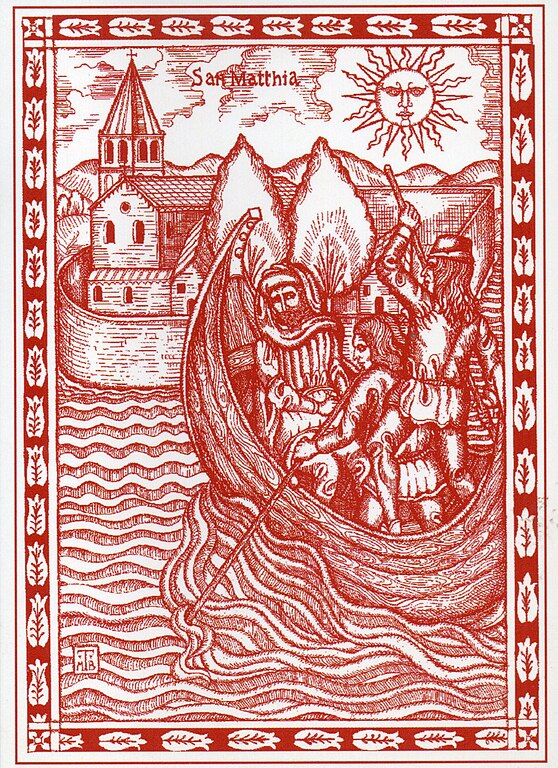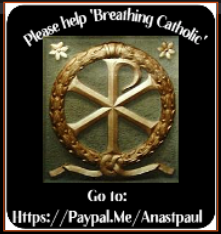Saint of the Day – 31 March – Blessed Daniel of Venice ECMC (1344-1411) Martyr, Husband, Father, Entrepreneur, Politician, Diplomat, Peace-maker, Apostle of the poor, part-time Monk and Hermit. Born in 1344 in Cormons, near Venice, Italy and died on 16 September 1411 at San Mattia di Murano, Venice, Italy by being murdered by thieves. Also known as – Daniel of Murano, Daniel de Ungrispach. He is commemorated by the Camaldolese Hermits of Mount Corona on 20 March. The Church has never confirmed the cult of this “Blessed” but he still legitimately enjoys this title, as he is present in the Calendar of his Religious family and, in 1435, his cult was approved by the local Bishop. He is venerated as a “Martyr of Charity” and his body is preserved Incorrupt.
Daniel was born in the Castle of Cormons, around the year 1344, the eldest son of Nicolaussio d’Ungrispache of Maddalena Savio of Gemona. His was a noble family of Germanic lineage, “very wealthy.” Lords of Cormons, Medea and Foiana, vassals of the Counts of Gorizia, whih had among its members a Bishop of Concordia and one of Trieste. Even today the Coat of Arms of the Municipality of Cormons is inspired by that of Daniel’s family.
When Daniel was sixteen the family moved to Pordenone, where, at around twenty years of age, Daniel married Ursina Ricchieri, a member of the most powerful family in the City. They had a daughter, Lucia, who, in 1384, married the noble Giacomo Spelladi of Treviso. Between 1365 and 1368 Daniel was a prisoner in Verona, perhaps due to unrest and events of war. He endured the ordeal without harbouring resentment. Despite his young age, he was already so well liked by his fellow citizens that they intervened to obtain his release.
Daniel was an upright husband and father, he lived his days as a good Christian. The chronicles describe him: “a noted observer of God’s law, of every religious practice, of singular compassion towards the poor and a great lover of Pious Places.” He successfully engaged in the trade of silk and woollen cloth and cowhides. On the route which took him to Venice, sailing along the Noncello river, he had the opportunity to meet the Camaldolese of the Abbey of San Martin Rotto. The young man was attracted by monastic and hermitic spirituality, typical of the Order founded by St Romuald. The high-ranking position of the family,but certainly alsothe desire to contribute to the public administration in favour of his fellow citizens, also led him to political commitment and so, in 1384, he was appointed “podestà” (a very high Office and authority similar to a Mayor). The position was annual and included representation of the community, both in the Civil and Religious spheres.
During his travels to Venice Daniel visited the important Camaldolese Monastery of San Mattia on the island of Murano, where, increasingly attracted by monastic life, he became a family guest.
For nineteen years, while maintaining family, social and work commitments, he constantly frequented the Monastery where he fully breathed the presence of God. He loved reading the Scriptures and the writings of the Fathers of the Church, in particular, Saint Augustine. Then, having even large sums of money at his disposal, he responded generously to the needs of the poor and of the Monastery. He could lead a life suited to his social status but instead, he preferred, day by day, to respond to this deep desire to become united to God, alternating days marked by social commitments with days of prayer, spent alongside his Monk friends. His life was a wonderful synthesis of ‘Ora et labora’ — Husband, Father, Entrepreneur and even Politician, with his gaze always turned towards the Giver of all good.
In 1380 he embarked on the journey to become an oblate of the Camaldolese Congregation which was fully completed on 31 March 1392. From that day he had a cell of his own. He was generous, as mentioned, with hisMmonastery but also with other religious entities, especially Venetian ones, so much so that in 1398 he was appointed procurator of the Church of St Mark!
At the age of fifty, the desire for a hermit’s life prevailed and Daniel renounced the rights, privileges and family assets which were due to him after his father’s death. He left his wife, by mutual agreement and was welcomed into the Monastery of San Mattia to share more fully in the life of the Monks but without the obligation of seclusion. From time to time, he returned to Pordenone and in 1404-1405, he was once again Official of the Municipality and Mayor, probably the Deputy, a sign of the great trust everyone placed in him. He continued to carry out the mercantile profession but also had some diplomatic positions. In 1406 he was among the intermediaries in a serious disagreement between Pordenone and Aquileia. The Mayor and the nobles of the City, including Daniel, were tasked with mediating to obtain forgiveness and peace.
On 16 September 1411 Daniele, while he was in Pordenone, wrote a Last Will naming his wife as universal heir. He arranged to be buried in San Mattia, to which he left bequests and precious books, including a Bible, a Legendary of the Saints, the Sermons of Saint Augustine. A few days later, after returning from work from in Venice, unknown criminals entered his cell at night and strangled him for the purpose of robbery. They were certainly aware of his habits and the money he had with him. The Camaldolese Fathers, struck by such an unjust death, gave him a devout burial in the tomb of the Donà nobles inside the Monastery. He was immediately considered a “Martyr of Charity.”

Twenty-four years after his death, in 1435, the body was exhumed and found Incorrupt, “vivid in colour and exuding a very sweet odour, unlike the others found ruined and putrified.” It was placed on an Altar and immediately became a destination for devout pilgrimages. Everyone thought that the Incorrupt body confirmed the holiness which Daniel had displayed in life. The Bishop of Torcello approved the local cult and arranged for an Urn containing the Relics to be displayed in the Church. Graces and miracles followed and Daniel’s fame attracted, in the Centuries to come, faithful from the entire Venetian and surrounding areas. In 1657, Daniel’s Incorrupt body was placed on its own Altar, in a new wooden case, which is still the current one.
In 1810 the Monastery of San Mattia di Murano was suppressed and the Church subsequently destroyed. The body of Blessed Daniel underwent several translations and for a period was preserved in the sacristy of the Basilica della Salute in Venice. In 1857 the remains returned to Murano, the Urn was placed in the external Chapel of the Teacher Sisters of Santa Dorotea, who had opened a school on the island. The Nuns kept a register of the graces obtained by the Blessed, some as late as 1903. The body is today in the Basilica of St Donato, still Incorrupt, covered in a golden robe, a gift for a grace received in 1745. All testimonies of a cult which has never ceased.
Dedicated to his family, involved in public life, active in the mercantile profession, Daniel always had the Word of God as his compass and prayer as his companion. His example is undoubtedly of great relevance in the world we inhabit today. The local memory is set for 31 March, while the Camaldolese commemorates it on 20 March. The “ab immemorabili” recognition of the cult and the official title of Blessed would be highly desirable for this great and holy man.








You must be logged in to post a comment.